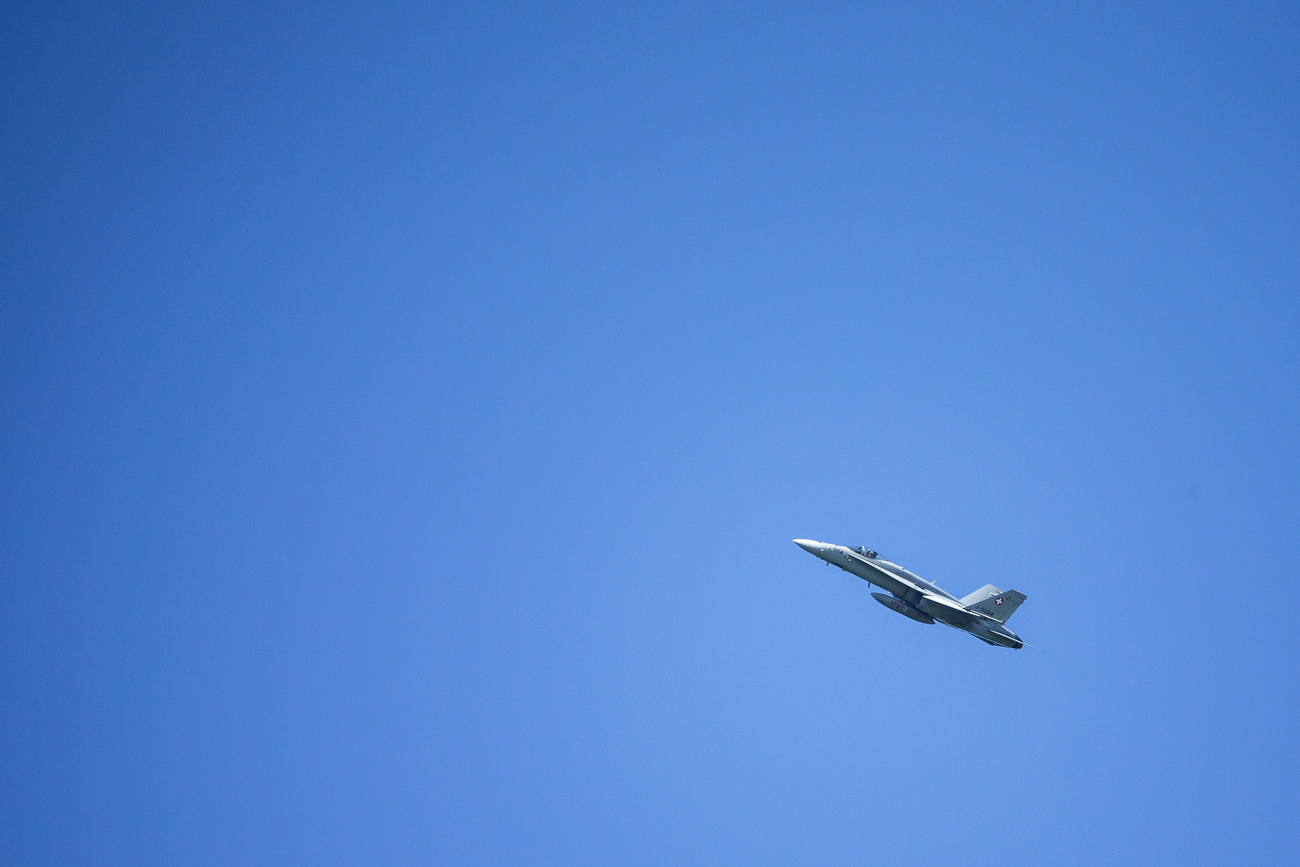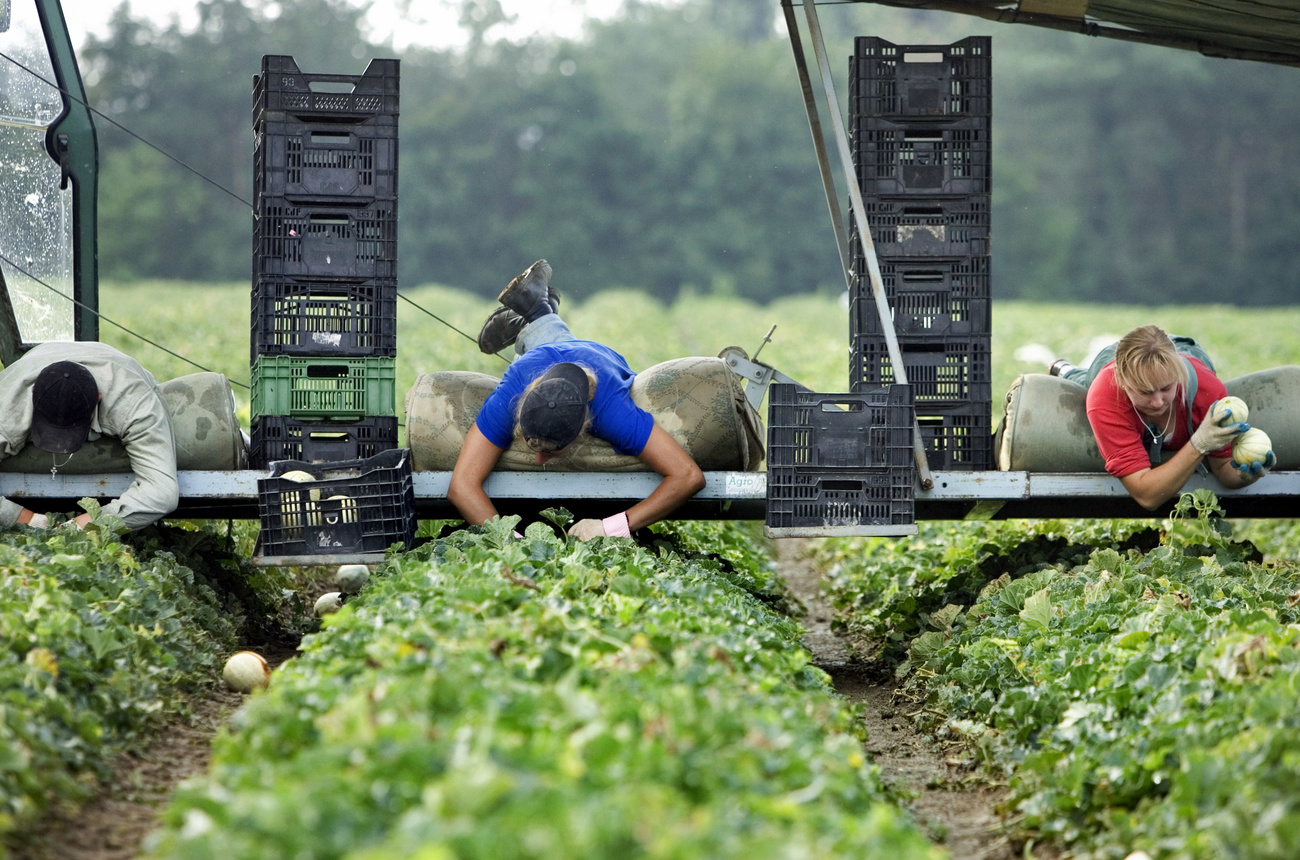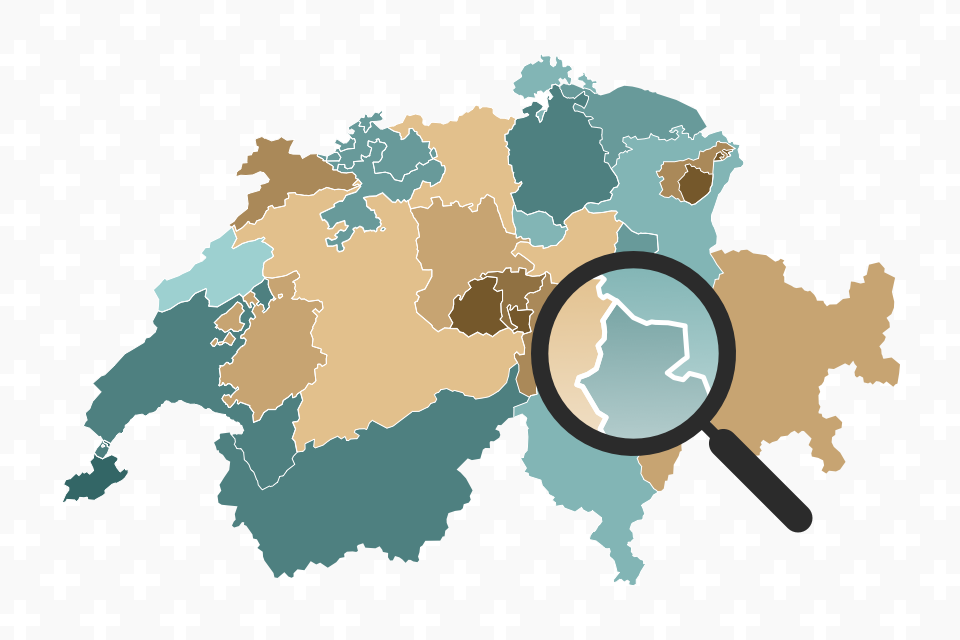
Wafer-thin majority approves new fighter jets

By a margin of fewer than 9,000 votes, Swiss citizens have given a cautious all-clear for a multi-billion purchase of new fighter jets for the air force.
In the end, 50.1% of the roughly three million voters who cast ballots approved the CHF6 billion ($6.49 billion) funding packet after a surprising afternoon that left pollsters unable to call the result until the last minute.
Projections over the past weeks had shown clear acceptance for the government-backed plan, which will see the army replace its ageing fleet of F-5 Tigers and F/A-18 jets by 2030.
Lukas Golder of the GfS Bern research institute said on Sunday that the high turnout of urban voters, who are generally more critical of the army, may have driven the close result. The cost of the plan and the current “pandemic effect” were also decisive, he said.
Defence Minister Viola Amherd welcomed the victory and said the government would now proceed with the evaluation of four models bidding for the contract: the Lockheed-Martin F-35, Boeing’s Super Hornet, Dassault’s Rafale, and Airbus’s Eurofighter Typhoon.
In principle, voters will have no further say on the type of new planes to be bought. However, the Group for a Switzerland without an Army (GSoA), which led the opposition campaign, has already said it will launch a people’s initiative to challenge the government’s choice. Amherd said this will not derail plans to finalise the contract by 2021.
Other opposition figures were both enthused and disappointed by the nearness of the loss on Sunday, which Green Party president Regula Rytz said was a “sensational” victory in itself.
Roger Nordmann, vice-president of the leftwing Social Democrats, said the tiny margin of victory showed that the army suffers from a “credibility problem”. At the same time, however, he praised Amherd for the manner of her campaign.
New context
As opposed to the narrow rejectionExternal link in 2014 of a CHF3 billion purchase of Swedish Gripen jets, this time polls had indicated a relatively clear success with 56-58% support.
In a report two weeks ago, GfS Bern said that while in 2014 the issue of new fighters was seen as less pressing, its supporters had this time argued that rejection would leave the country unable to defend its skies by 2030.
Without new fighters, the army – an important institution of non-NATO member Switzerland – would be unable to fulfil its mandate of protecting the country, said these supporters, who included the government and a majority of parliament.
In practice, Switzerland has few enemies and has fought no wars in centuries. But during its campaign, the government argued that the air force is vital for remaining credibly independent and sovereign – even if an all-out aerial attack is improbable.
It also raised the issue of terrorism and new geopolitical uncertainties. “Europe and the world have become more unstable,” it wrote in the official vote booklet. The army needs to be ready to face any unknown threats that come up in the next 30 to 40 years.

More
Swiss rebuff right-wing plan to curb EU immigration
Blank cheque
Opponents, mainly left-wing parties and anti-army groups, said the CHF6 billion amounted to a “blank cheque” that would be better spent on climate protection, health, or the Covid-19 crisis: “fighter jets are useless against a pandemic”, they said.
However, they shied away from painting their cause as anti-army generally. The main argument was that air policing tasks could be done by cheaper, lighter, and more sustainable planes, while the bigger tasks of combat and air defence are in any case illusory.
“Who wants to attack Switzerland?” said Green Party politician Fabian Fivaz.
As for the price tag, they also claimed that when maintenance, upgrades, and ancillary costs are factored in, the jets would cost CHF24 billion rather than CHF6 billion.
This amounted to buying “luxury jets” rather than cheaper but effective models: “a Maserati rather than a Fiat” as Social Democrat parliamentarian Priska Seiler Graf put it.
For its part, the government defended the price tag by raising the so-called offset agreement – a compensatory system that will be into the deal, obliging the company involved to place orders with Swiss firms worth 60% of the contract value.

More
Vote results: September 27, 2020
Anti-immigration initiative: 38.3% Yes 61.7% No
Credit for fighter jets: 50.2% Yes 49.8% No
Paternity leave: 60.3% Yes 39.7% No
Tax break childcare: 36.8% Yes 63.2% No
Reform hunting law: 48.1% Yes 51.9% No
Turnout: 59.4%
This was the second set of nationwide votes this year, rather than the third, as a ballot in May was cancelled due to the Covid-19 crisis.
Around 5.4 million Swiss citizens, including registered expatriate Swiss, were eligible to take part in the votes. There were also numerous ballots at cantonal and local levels on September 27.

In compliance with the JTI standards
More: SWI swissinfo.ch certified by the Journalism Trust Initiative

















![The four-metre-long painting "Sonntag der Bergbauern" [Sunday of the Mountain Farmers, 1923-24/26] had to be removed by a crane from the German Chancellery in Berlin for the exhibition in Bern.](https://www.swissinfo.ch/content/wp-content/uploads/sites/13/2025/12/01_Pressebild_KirchnerxKirchner.jpg?ver=a45b19f3)












Join the conversation!